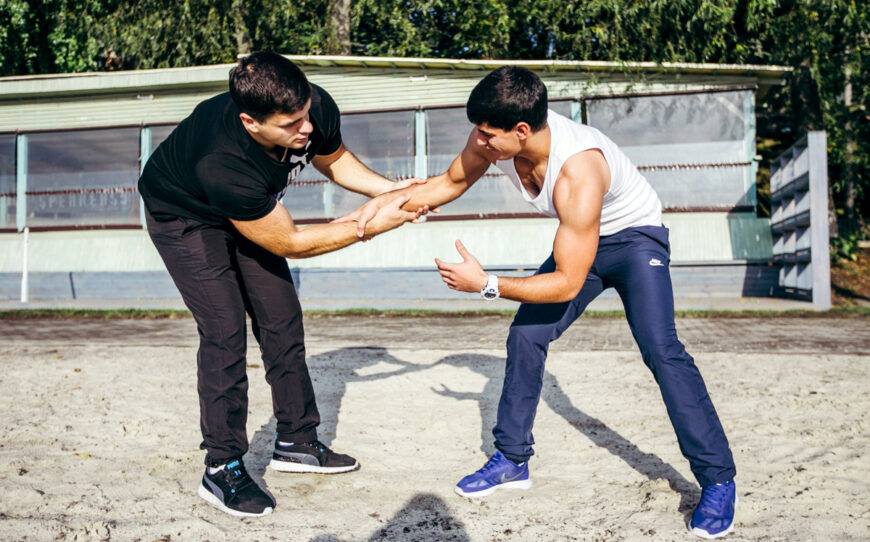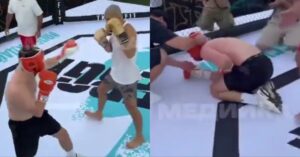The world of martial arts is vast and diverse, with countless styles and disciplines to explore. But if you’ve ever wondered which ones are best suited for a real-life street fight scenario, look no further.
In this blog post, we will examine the top martial arts that provide practical self-defense techniques and effective striking or grappling skills essential in handling street fights.
We’ll also delve into factors like legal considerations, personal preferences, and overall effectiveness in choosing the right martial art for you.
Top Martial Arts For Streetfighting
Krav Maga, Brazilian Jiu-Jitsu, and Boxing are just a few of the top martial arts for streetfighting.
- Krav Maga
- Brazilian Jiu-Jitsu
- Boxing
- Muay Thai And Kickboxing
- Taekwondo
- Combat Sambo
- Karate
- Judo
- Wrestling
- MMA
Krav Maga
Krav Maga is a martial art developed for the Israeli Defense Forces and is known for its practical self-defense techniques. It emphasizes real-life scenarios and incorporates both striking and grappling techniques to quickly take down an opponent.
Krav Maga also teaches students to use everyday objects as weapons, such as keys or a pen, making it highly effective in street fighting situations where weapons may not be readily available.
The emphasis on quick and efficient movements means that practitioners of Krav Maga develop good reactions and reflexes, which can help them defend themselves in unpredictable situations.
Brazilian Jiu-Jitsu
As a grappling-based martial art, Brazilian Jiu-Jitsu places an emphasis on taking down and submitting an opponent. This makes it useful in a street fight scenario where the goal is to incapacitate the attacker as quickly and efficiently as possible.
BJJ practitioners learn various techniques to control and immobilize their opponents while attempting submissions like chokes or joint locks.
In fact, there are numerous stories of smaller BJJ fighters using their skills to defeat much larger attackers in real-life self-defense situations. For instance, Royce Gracie famously won the first several UFC events using only his Brazilian Jiu-Jitsu skills against opponents who were often heavier and stronger than him.
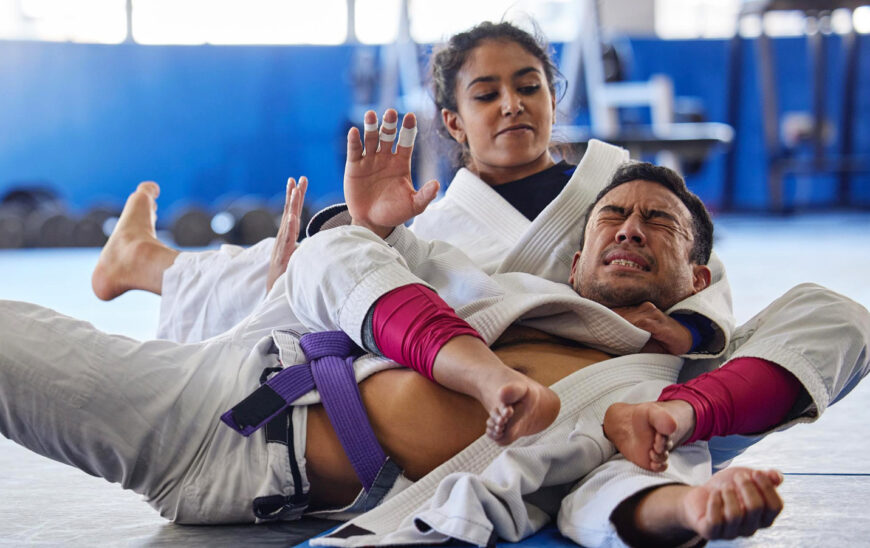
Read also Brazilian Jiu-Jitsu Belt System: The Journey to Black Belt
Boxing
Boxing is one of the most popular martial arts for self-defense, as it teaches practical punching techniques and footwork. In a street fight scenario, punches can be an effective way to quickly incapacitate an opponent.
Proper technique and conditioning are crucial in boxing, as even a small mistake can leave you vulnerable to counterattacks. Footwork is also emphasized in boxing, allowing practitioners to move around their opponents while maintaining balance and striking power.
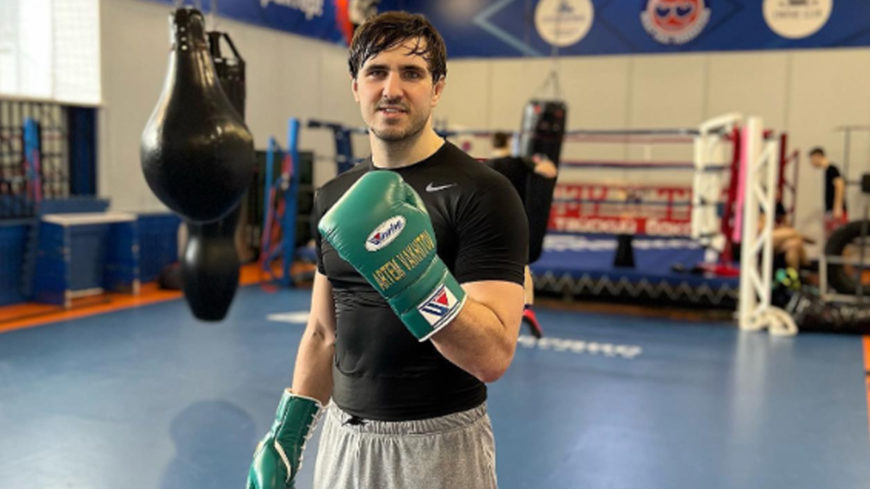
Muay Thai And Kickboxing
When it comes to street fighting, Muay Thai and Kickboxing are two of the most effective martial arts for striking an opponent. Both styles utilize powerful kicks, knees, elbows, and punches to deliver devastating blows to an attacker.
Muay Thai originated in Thailand and has become a popular combat sport around the world due to its effectiveness in both self-defense and competition.
In addition to honing striking techniques, training in Muay Thai or Kickboxing can also improve fitness levels through cardio-intensive workouts that develop endurance, strength, and agility.
However, it’s important to remember that while these martial arts are effective for self-defense situations on the street or in competition settings like MMA fights, they also come with inherent risks such as physical injury.
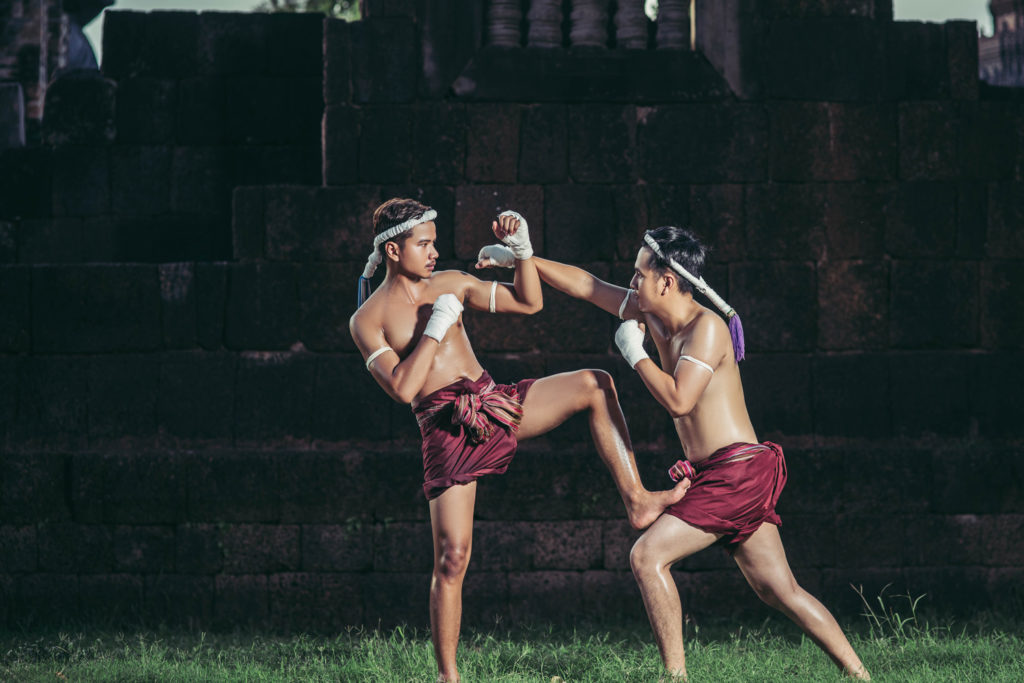
More on Muay Thai:
- How Muay Thai & Kickboxing Can Help You Lose Weight
- Muay Thai Training: Comparing Golden Era Training to Modern American Muay Thai
- A Complete Guide To All The Muay Thai Equipment You Need
Taekwondo
Taekwondo is a Korean martial art that has become increasingly popular as a form of self-defense. It emphasizes high kicks, quick footwork, and powerful strikes to take down an opponent.
Taekwondo practitioners learn how to defend themselves against attackers through a series of self-defense moves called “poomsae” and through sparring with other Taekwondo students.
In addition to its usefulness in defending oneself in real-life situations, Taekwondo is also recognized as an Olympic sport and offers the opportunity for competition at the highest level.
Its emphasis on physical fitness makes it an excellent option for those looking for a martial art that will improve their overall health and well-being.
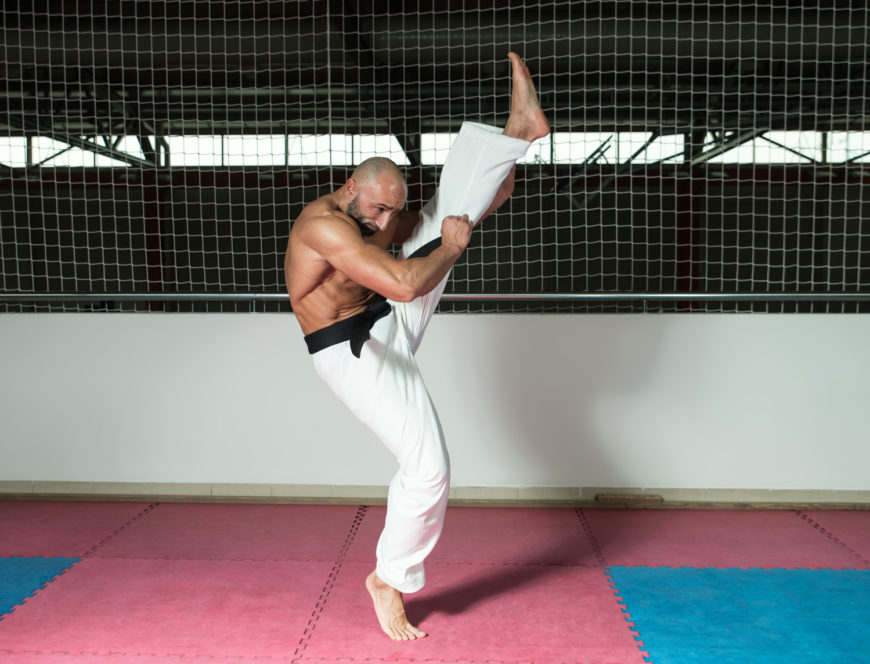
Read also: Taekwondo Belt Levels And Ranking Guide
Combat Sambo
Combat Sambo is a Russian martial art that combines elements of wrestling, judo, and striking techniques. It was developed for the military to use in close combat situations, making it practical for self-defense scenarios.
In Combat Sambo, practitioners learn how to take down an opponent using grappling techniques and strikes while also being trained in hand-to-hand fighting.
One notable example of Combat Sambo being used effectively is when UFC fighter Khabib Nurmagomedov, who has a background in the style, utilized his skills to dominate opponents.
Combat Sambo emphasizes scenario-based training as well as sparring with protective gear; this allows practitioners to develop their skills under pressure and test them against resisting opponents without risking serious injury.
Karate
Karate is a traditional Japanese martial art that has gained popularity around the world for its powerful striking techniques. This style of fighting emphasizes punches, kicks, and knee strikes that are designed to take down an opponent quickly.
One of the benefits of karate is that it is a versatile fighting system that can be adapted to different situations.
In addition to its effectiveness in self-defense scenarios, karate also offers physical and mental benefits. Consistent practice can improve balance, flexibility, strength, and cardiovascular fitness.
Karate training also instills discipline and focus in practitioners which can translate into other areas of life such as work or school.
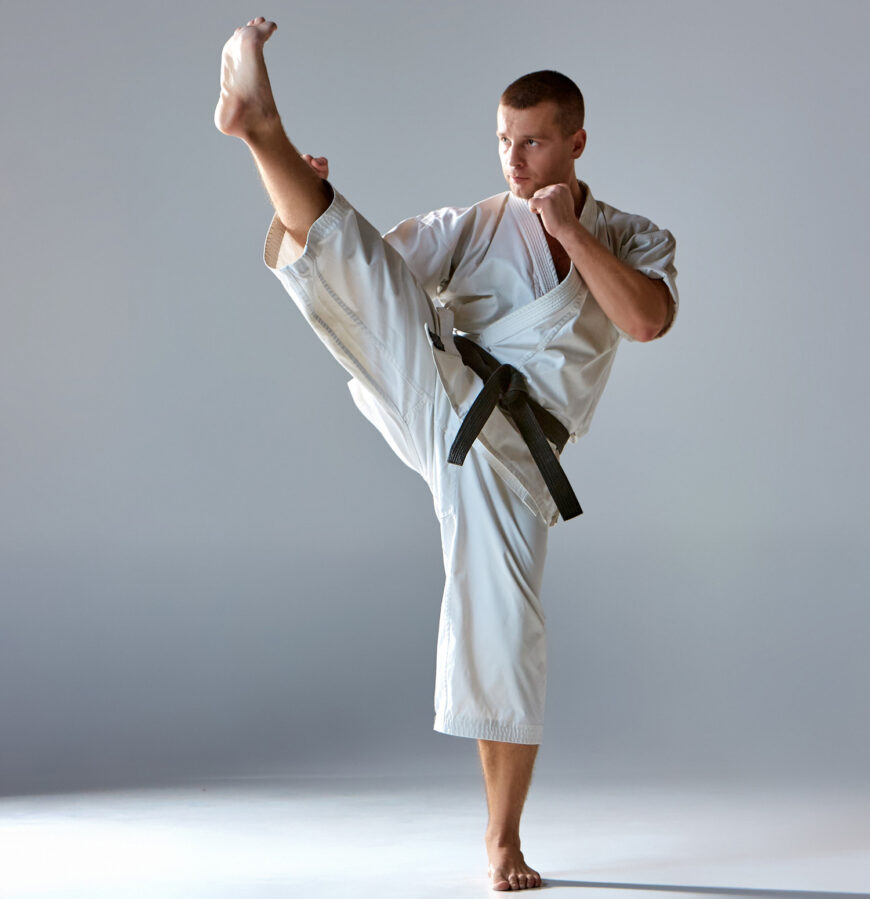
More about Karate:
Judo
Judo is a martial art that emphasizes throws and takedowns to bring an opponent to the ground. One of the most practical aspects of Judo for street fighting is its focus on controlling an opponent’s momentum and using it against them.
In addition, because Judo is a grappling-based martial art, it teaches practitioners how to handle themselves in close-quarters combat situations. By learning how to defend against grabs and holds, you can more effectively protect yourself from attackers who are trying to restrain or control you.
Wrestling
Wrestling is a martial art that emphasizes takedowns, throws, and grappling techniques. Considered one of the oldest forms of combat sports in the world, wrestling has also been proven effective in real-life self-defense situations.
Wrestlers are trained to control their opponent’s body movements and leverage their own strength to gain an advantage. This makes it particularly useful in close-range combat scenarios where strikes may not be as effective.
In fact, many mixed martial arts fighters incorporate wrestling into their training to improve their ground game skills and take down defense.
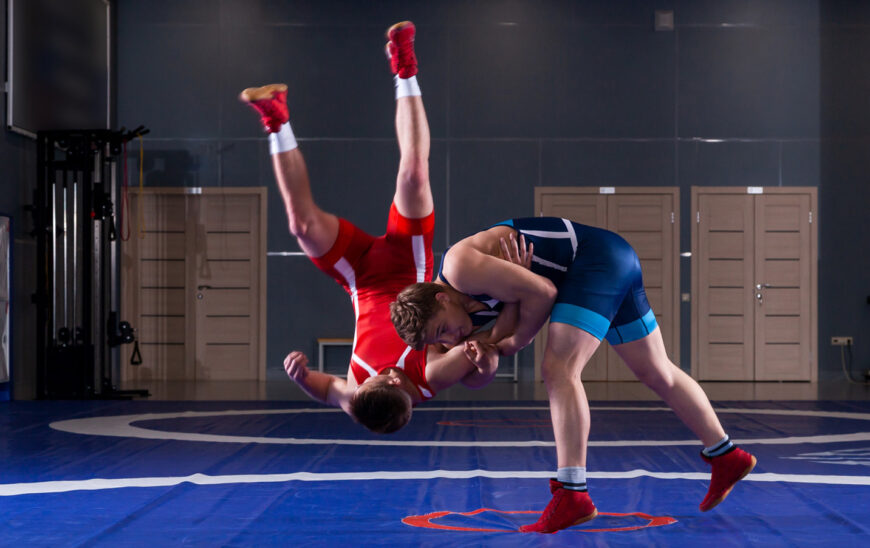
Read also: What Do Wrestlers Wear Under Their Singlet?
MMA
As an avid MMA fan and practitioner, I strongly endorse it as the most effective martial art for street fighting. This is because of its combination of various grappling and striking techniques from different styles such as boxing, kickboxing, judo, wrestling, Brazilian Jiu-Jitsu (BJJ), and Muay Thai.
One example that highlights the effectiveness of MMA in self-defense happened when UFC fighter Lyoto Machida took down a would-be robber who attacked him with a knife outside his house.
The assailant was no match for Machida’s skills and had to be restrained until police arrived. Additionally, MMA fighters like Conor McGregor have proven their dominance both inside and outside of the octagon through their mastery of different fighting styles.
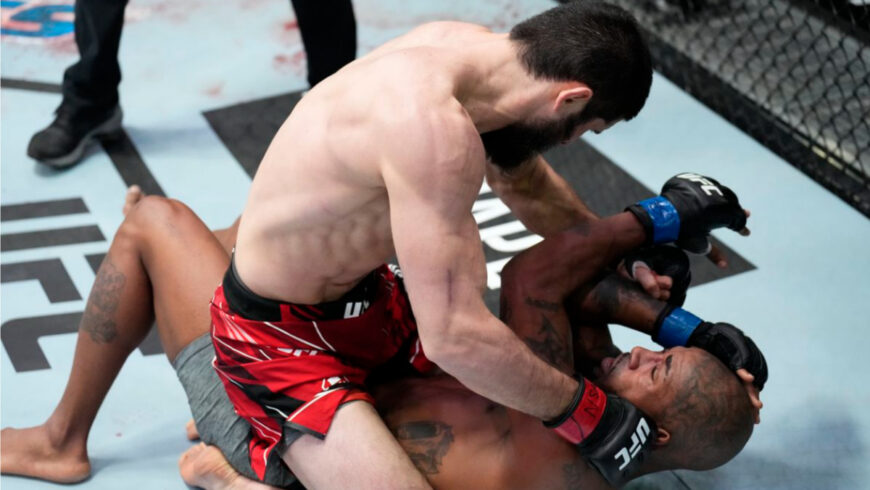
Factors To Consider When Choosing A Martial Art For Streetfighting
Consider legal implications, effectiveness in self-defense scenarios, practicality for real-life situations, and personal fitness level and preferences when selecting a martial art for street fighting.
Legal Considerations
As a street fighter, it’s essential to be aware of the legal ramifications that may arise from engaging in physical altercations. While martial arts training equips us with valuable tools for self-defense, we must exercise caution and restraint when applying these techniques outside the gym or dojo.
To navigate this complex terrain, it is vital to familiarize yourself with your local laws and remain cognizant of factors like proportionate response and reasonable force.
For example, let’s say you’re confronted by an unarmed aggressor who throws a punch at you; responding with a lethal strike could land you in legal hot water even though your action was defensive in nature.
Effectiveness In Self-defense Situations
In the realm of self-defense, the effectiveness of a martial art is crucial when faced with unpredictable street fights. A practical and efficient martial art will focus on techniques that can quickly neutralize an attacker, regardless of size and strength.
Additionally, striking-based arts like Muay Thai or boxing equip practitioners with powerful punches and kicks that can incapacitate an assailant quickly. On the other hand, Krav Maga specifically caters to real-world situations by incorporating various elements from different martial arts such as grappling from Judo or BJJ and striking from boxing.
Practicality In Real-life Scenarios
In real-life street fight scenarios, the practicality of the martial art you choose plays a crucial role in ensuring your ability to effectively defend yourself. A key aspect of practicality is how well a particular martial art adapts to unpredictable, high-pressure situations.
Another factor that impacts practicality is ease of learning and mastering essential self-defense techniques. Arts like Krav Maga focus on simple yet efficient moves suitable for people with varying fitness levels and experience, making them more accessible to beginners.
Striking arts such as Boxing or Muay Thai offer valuable lessons on footwork, distance management, and accurate strikes that can come in handy against multiple attackers or when trying to create an escape route during a dangerous confrontation.
Fitness Level And Personal Preferences
As a street fighter, it’s crucial to consider your fitness level and personal preferences when choosing a martial art for self-defense. If you’re already in good shape, then an intense and physically demanding martial art like Muay Thai or Combat Sambo might be the perfect fit for you.
It’s also essential to choose a style that aligns with your personal preferences. For example, if you enjoy grappling-based techniques and skillful ground work, then styles such as Judo or Brazilian Jiu-Jitsu would be ideal.
If striking techniques appeal more to you, then arts like Boxing or Taekwondo would be more preferable.
Training And Practice For Streetfighting
Consistent practice and conditioning are essential in streetfighting, while scenario-based training and sparring with protective equipment will help prepare for real-life situations.
Consistent Practice And Conditioning
Maintaining a consistent practice and conditioning routine is crucial for effectively utilizing martial arts in street fighting scenarios. Here are some key points to consider:
- Regular training sessions: Consistent training sessions will help refine techniques, build muscle memory, and improve reaction time in real-life situations.
- Cardiovascular fitness: Many street fights can quickly escalate into extended altercations, making cardiovascular endurance essential for staying alert and agile throughout the confrontation.
- Strength training: Incorporating strength training exercises will enhance overall physical ability and aid in grappling-based martial arts techniques such as Judo or Brazilian Jiu-Jitsu.
- Focus on technique: Practicing proper form will reduce the risk of injury during a street fight while also maximizing power and efficacy.
- Stretching and warm-up exercises: Before any training session or fight, it is essential to properly stretch muscles to maintain flexibility and prevent injury.
By consistently practicing and conditioning, martial artists will be better prepared to utilize their skills in self-defense situations.
Scenario-based Training
To be truly prepared for a street fight, scenario-based training is essential. This type of training involves practicing real-life scenarios that may occur on the streets, such as being attacked by multiple assailants or defending against a weapon.
One example of scenario-based training is role-playing with a partner or instructor acting as an attacker. Fighters can practice different defensive techniques based on the type of attack they are facing, such as grappling for close combat or striking for longer-range attacks.
Ultimately, effective self-defense requires both physical skill and mental preparation.
Sparring With Protective Equipment
Sparring is an essential aspect of martial arts training, especially when it comes to preparing for a street fight. However, sparring can be dangerous without the use of protective equipment such as headgear, gloves, and shin guards.
Protective gear not only reduces the risk of injury but also allows fighters to simulate real-life scenarios while minimizing potential harm.
Furthermore, sparring sessions should be conducted under the guidance of a qualified instructor who can provide valuable feedback and constructive criticism. These sessions are an opportunity for fighters to practice their techniques and learn how to apply them in different situations effectively.
Studying Streetfighting Scenarios
To effectively prepare for a real-life street fight, it’s essential to study and understand common scenarios that may arise. This means analyzing situations like being attacked from behind or dealing with multiple attackers.
One way to study these scenarios is through scenario-based training in your chosen martial art. For example, practicing defending against surprise attacks from different angles or learning how to defend yourself on the ground against multiple attackers.
Overall, understanding and preparing for various streetfighting scenarios provides an advantage in self-defense situations.
Self-Control In Streetfighting
Maintaining self-control is essential in a street fight to avoid escalating the situation and potentially facing legal consequences. Understanding defensive techniques and emphasizing them can also help protect yourself in these scenarios.
Understanding Legal Consequences
As important as it is to be prepared for a street fight, understanding the legal consequences of your actions afterwards can save you from further trouble.
It is crucial to remember that self-defense does not give you unlimited rights to hurt or harm someone else in any way. Therefore, when defending yourself, use only enough force necessary to stop the attacker and get away safely.
Additionally, being aware of local laws that dictate what constitutes lawful self-defense in your area is essential. Different states have different definitions of what they consider justifiable use of force, so make sure you know yours well before putting yourself into a violent situation.
Emphasizing Defensive Techniques
In any street fight scenario, it’s crucial to remember that the goal should be to protect yourself and get out of harm’s way. Emphasizing defensive techniques can help you achieve this goal by minimizing your opponent’s attacks while keeping yourself relatively safe.
One example of a great defensive technique is “slipping,” which means moving your head off-center to avoid an incoming punch or strike. Another popular self-defense approach is called the “cover-up” strategy, where you use both arms and hands to cover up vulnerable areas like the face, neck, or torso during an attack.
Learning these and other defensive tactics through consistent practice and real-life scenarios training can help you stay composed under pressure in a street fight situation and improve your chances of survival.
Maintaining Composure Under Pressure
Staying calm under pressure is crucial in a streetfight as it can often determine the outcome of the encounter. It’s easy to become overwhelmed with emotions like fear, anger or nervousness when confronted with an opponent.
Understanding legal consequences is essential when it comes to street fighting. Even if you are acting in self-defense, excessive force could lead to severe legal repercussions such as assault charges or even incarceration.
Defensive techniques such as blocking punches, disarming opponents without causing harm and using minimal force are effective ways of maintaining composure under pressure while also avoiding legal problems.
FAQs
1. What are the best martial arts for streetfight?
The best martial arts for street fighting include Brazilian Jiu-Jitsu, Krav Maga, Boxing, Muay Thai and Wrestling. These styles emphasize practical techniques that can help you defend yourself in real-world situations.
2. Can anyone learn martial arts for self-defense?
Absolutely! Martial arts is an accessible discipline that anyone can learn regardless of age or fitness level. It’s a great way to develop physical strength and mental toughness while learning valuable skills that may just save your life one day.
3. How long does it take to become proficient in a martial art?
Learning any new skill takes time and dedication, but proficiency in a martial art depends on factors like natural ability, training frequency and intensity, as well as the specific style being learned. Generally speaking, it could take several months or even years before someone becomes proficient enough to feel confident defending themselves with their chosen style.
Conclusion
In conclusion, when it comes to choosing the best martial art for street fighting, there are many factors to consider. It’s important to choose a style that is effective in real-life scenarios and practical for your fitness level and personal preferences.
MMA, Judo, Brazilian Jiu-Jitsu, Krav Maga, Muay Thai, Boxing, Wing Chun, Taekwondo and Karate all offer unique techniques that can be applied in a street fight situation.
Remember that consistent practice and scenario-based training are crucial to developing fighting skills. While self-defense is important, it’s also essential to maintain self-control in these situations by understanding legal consequences and emphasizing defensive techniques.

